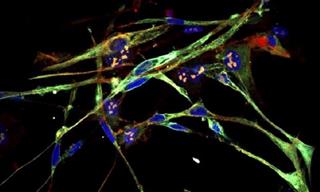Lactose intolerance, or the inability to digest milk and dairy, is very common in adults. It's a condition where your small intestine cannot break down all the lactose (a type of sugar primarily found in dairy) you eat or drink. According to estimates, almost 70% of the world’s population is lactose intolerant.
While people are aware of lactose intolerance, there can be a lot of confusion and misunderstanding surrounding the condition. For example, many people still believe that all people who are lactose intolerant were born that way, or that you must avoid all dairy if you're lactose intolerant.
In this article, we attempt to bust some of the most common myths about lactose intolerance.
Related: If You’re Lactose Intolerant, Avoid These 15 Foods
Myth #1: Milk allergies and lactose intolerance are the same

This is FALSE. They’re different problems with different causes. A milk allergy is an abnormal immune system response to milk and products containing milk. It happens the body has an immune reaction to the protein in milk. While cow’s milk is the usual cause of milk allergy, it can also be caused by milk from sheep, goats, buffalo, and other mammals. Signs and symptoms of milk allergy include wheezing, flatulence, vomiting, hives, itching on the lips, and digestive issues.
Lactose intolerance, meanwhile, is an enzyme deficiency. Our body needs the lactase enzyme to digest the sugar in milk. When we have lactose intolerance, our body doesn’t make enough lactase, and therefore, can’t handle too much lactose. This can result in some unpleasant symptoms such as diarrhea, bloating, stomach cramps, nausea, or vomiting.
Myth #2: You must avoid all dairy

It’s commonly assumed that people who have lactose intolerance can't eat any dairy. That’s not always the case. If you’ve learned that you have lactose intolerance, you need to be careful not to overload your system with lactose, as you don’t have enough of the enzyme that digests milk sugar.
The amount of lactose a lactose intolerant person can digest can vary from person to person. If you’ve been diagnosed with this condition, it’s best to adopt a trial and error approach. Some dairy products like hard cheese, butter, and yogurt contain less lactose than others - so it might be worth trying them after consulting your GP.
Lactose-free milk is another good option. Alternatively, you can take lactase tablets before you drink milk.
Related: Lactose Intolerant? Don’t Give Up These 6 Dairy Products
Myth #3: Everyone who is lactose intolerant has the same symptoms

Not necessarily true. Not everyone with lactose intolerance will experience the same set of symptoms (bloating, cramps, nausea, flatulence, and diarrhea). Moreover, the symptoms can vary too! For example, some may experience a slight stomach upset followed by nausea a couple of hours after having some ice cream. Others may have diarrhea just 30 minutes after having some cream cheese.
Myth #4: People with lactose intolerance are born with it
No. In fact, according to National Health Service guidelines, lactose intolerance often develops when people are between 20 and 40 years old. Only in some very rare cases, lactose intolerance is inherited. This type of lactose intolerance is called congenital or developmental lactose intolerance (where a person is born with the condition).
In most cases, though, the problem develops as the amount of lactase a person makes begins to decrease as they age. Intestinal diseases such as celiac disease and inflammatory bowel disease, or an injury to your small intestine can also cause lactose intolerance. In such cases, lactase levels can be restored if the underlying disorder is treated.
Myth #5: You can switch to goat’s or sheep’s milk

If you think switching to goat and sheep’s milk will be good alternatives to cow’s milk because you are lactose intolerant, you’re mistaken. While goat’s and sheep’s milk have less lactose, they both contain this sugar. So if lactose is an issue for you, you shouldn’t automatically chug down goat or sheep’s milk as alternatives because they could still trigger unpleasant symptoms.
Related: Let’s Find Out How to Remove Lactose from Milk
Myth #6: Lactose intolerance is easy to recognize
Remember that many symptoms of lactose intolerance are similar to those of other conditions. So if you are experiencing any of the symptoms, it’s important to speak to your doctor for a confirmed diagnosis instead of just assuming they are because of your lactose intolerance.
Share this post with your loved ones...
 Go to BabaMail
Go to BabaMail


























































